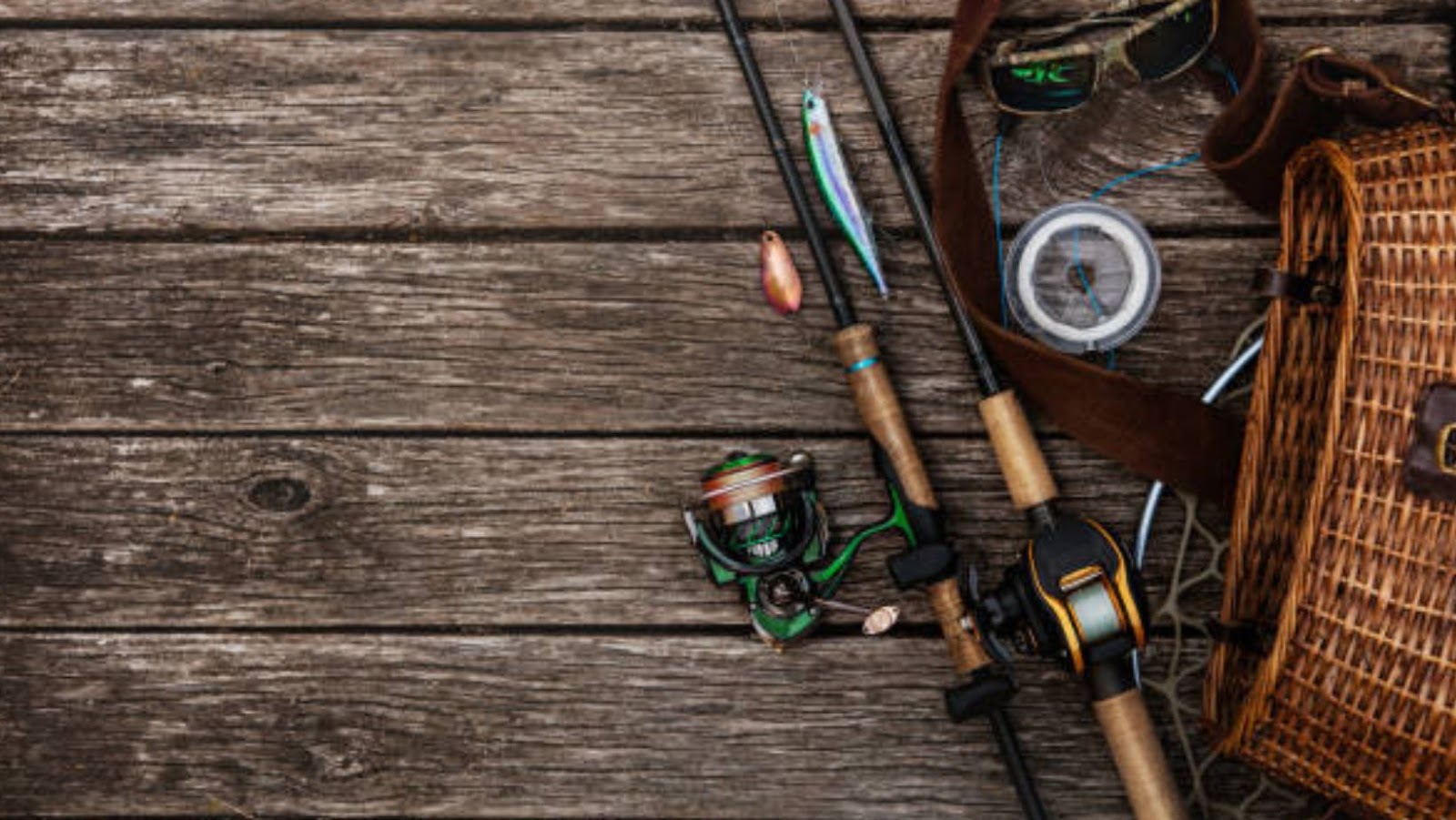Fly fishing is a unique technique that requires the angler to present an artificial fly to a fish to catch it. It involves the use of specialized equipment like fly rods, reels, and lines. The angler needs to study the fish’s habitat and behavior to determine which fly pattern to use for that particular species. Understanding the different types of flies and their characteristics is essential in this type of fishing.
To begin with, fly anglers need to learn and develop good casting techniques. This includes learning how to cast from different positions and angles and employing different casting styles like roll casting or double hauling. Fly tying is also an essential skill for fly fishermen as they’ll need to create customized flies suited for specific fishing conditions.
When selecting equipment, it’s important to consider the weight of the rod, reel, and line matched by a number system; picking appropriate gear can make or break your experience on the water. Additionally, understanding how fish feed will inform how you present your fly when targeting certain species in or around water currents.
It’s worth noting that knowledgeable guides or local fly shops are excellent resources in learning how to improve one’s techniques or simply where novices can start (Waters), but don’t be afraid of trial-and-error when trying something new on your own.
(Source: Waters, Alan D.. Fishing Basics : A Step-By-Step Beginner’s Guide To The Fundamentals Of Fishing (Kindle Locations 298-301). A.D.Waters Publishing House LLC.)
Better invest in a good fly fishing rod than in a therapist, at least the rod will listen patiently.
Table of Contents
ToggleHow To Start Fly Fishing
To gear up for your fly fishing journey, equip yourself with the right gear using this section on ‘Equipment for Fly Fishing’ with a focus on ‘Fly Rods’, ‘Fly Reels’, ‘Fly Lines’, ‘Leaders and Tippets’, and ‘Flies’. Discover the equipment necessary for a successful fly fishing trip and become familiar with their features and functions.
Fly Rods
The critical role of the tool known as Fly Rods in Fly Fishing cannot be overemphasized. Fly rods are essential to assist in casting light, artificial flies using a proper technique. It’s not just a matter of buying any rod off the shelf; selecting the appropriate length, weight, and action according to your fly fishing style is paramount.
The table below highlights the primary factors to consider when purchasing Fly Rods:
| Factor | Description |
| Length | The recommended size varies from 6-9 feet |
| Weight | Typically ranges from 2-12 wt depending on fish species |
| Action | Fast, medium-fast, slow |
| Material | Graphite or fiberglass |
| Pieces | 1-4 pieces available for various transport options |
Additionally, it’s crucial to factor in the intended use and skill level when purchasing Fly Rods. For beginners, fast action rods provide faster loading speed while more experienced anglers might opt for medium-fast or slow action rods depending on their preferences.
Fly fishermen like Joe Humphrey has this to say about fly fishing equipment: “I once went fishing without my medication – my fly rod – and had a terrible day.” A testament to how important it is to have well selected fly fishing equipment when setting out to enjoy this beloved sport.
If you’re looking for a reel-y good time on the water, invest in a quality fly reel.
Fly Reels
Fly reels play a significant role in fly fishing. They are devices attached to the end of the fly rod that hold, wind, and control the fly line, making it easier for anglers to cast and retrieve their baits.
Below is a table outlining important attributes of high-quality fly reels:
| Key Features | Description |
| Drag System | A drag system controls how much resistance is provided when reeling in a fish |
| Arbor Size | The size of the spool’s arbor affects line pickup speed |
| Material | The material determines durability and weight |
| Weight | Reels can vary from being ultra-lightweight to somewhat heavy. |
| Price | Fly reels can range in price with some carrying heftier price tags than others |
While some cheaper models may be appealing to novice anglers, investing in high-quality fly reels can make all the difference during fishing expeditions.
My friend Ted learned this lesson earlier this year when he decided to enter into a small local competition. After purchasing an inexpensive reel, he found himself struggling in his attempts to cast long distances and navigate through rough waters.
Ted soon realized that his low-cost reel was not equipped with adequate drag capabilities – something that quickly became apparent as he tried to reel in a particularly sizable catch.
To avoid any disappointment while out on the water, it is wise to invest in a premium quality fly reel with sufficient drag if one plans on doing more than just recreational fishing.
Making the right choice of fly line is like choosing a life partner – it’s all about compatibility and how well you can handle their weight.
Fly Lines
For those who are new to fly fishing, understanding the different types of lines available is crucial. The type of line used will depend on various factors such as fly size, casting distance and water conditions. Here are some of the most common types of fly lines:
| Fly Line Type | Description | Best Used For |
| Floating | Floats on water surface | Dry flies, nymphs |
| Sinking | Sinks below water surface | Streamers, wet flies |
| Sink Tip | Sinks partially, with floating end | Streamers in deep waters |
| Double Taper | Thinner at each end, thicker in the middle | Delicate presentation of smaller flies |
It’s important to choose a line that matches the rod weight and the intended use. For instance, heavier lines are better suited for larger fish and windy conditions while lighter lines are ideal for small streams or delicate presentations. It’s always recommended to consult with an expert before purchasing a line.
Pro tip: Purchase a few different types of fly lines to suit a variety of conditions and techniques. Changing out your line can make all the difference in your success on the water. Fish aren’t the only ones getting caught up in leaders and tippets, I’ve lost count of how many times I’ve accidentally hooked myself.
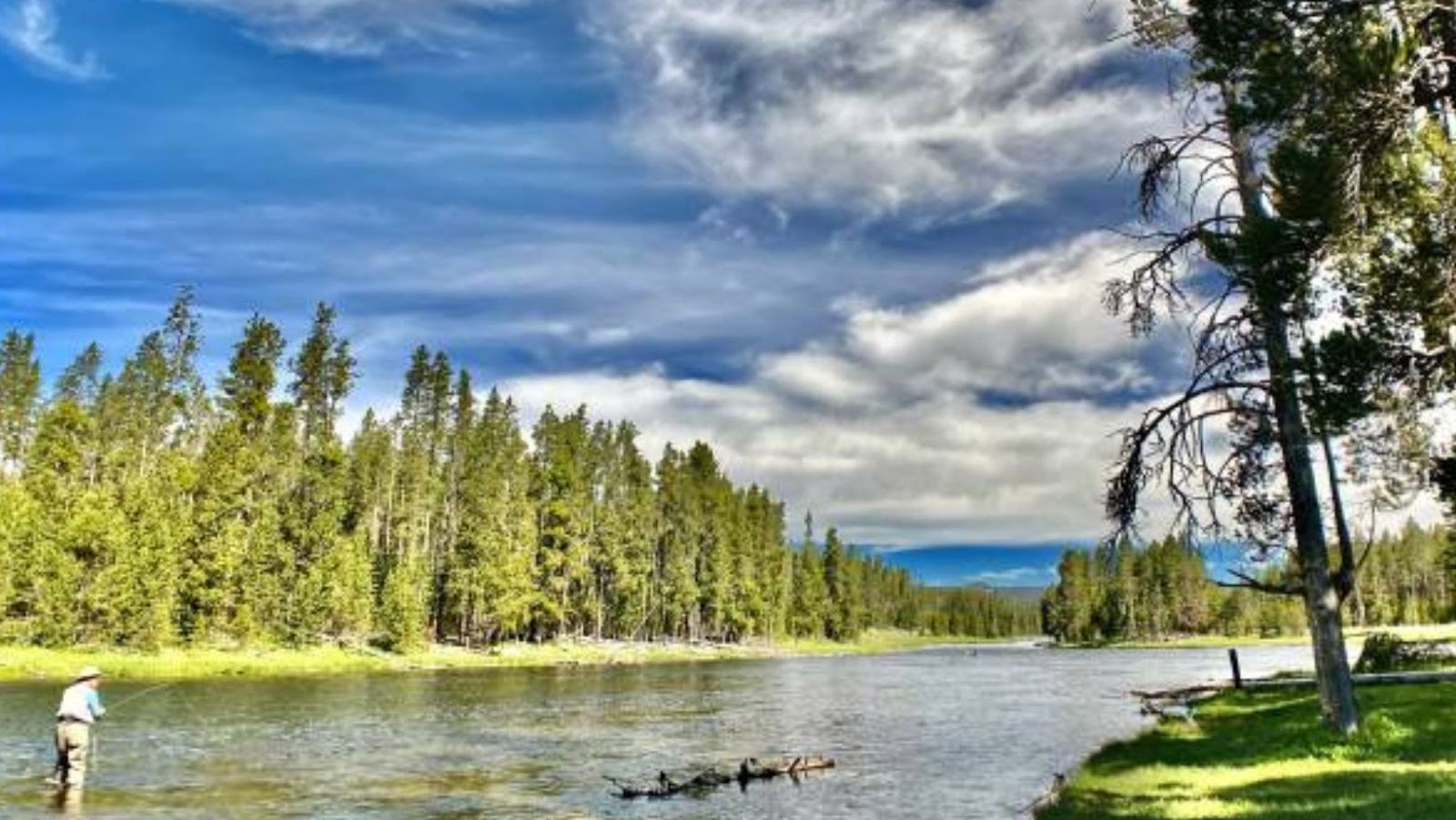
Leaders and Tippets
When it comes to the gear for fly fishing, one important piece of equipment is the tapered line that connects the angler’s fly to their rod. This line is called the Leaders and Tippets. The leader is a clear monofilament or fluorocarbon line that tapers down in size from thick to thin, while the tippet is a section of this line that connects directly to the fly.
To give you an idea of the different types and sizes of Leaders and Tippets available on the market, here’s a table with some examples:
| Type | Material | Length | Strength |
| Freshwater Leader | Nylon | 9ft – 15ft | 0x – 7x |
| Saltwater Leader | Fluorocarbon | 6ft – 12ft | 10lb – 50lb |
| Dry Fly Tippet | Nylon | 2ft – 5ft | 3x – 7x |
| Streamer Tippet/Leader Combo | Braided Nylon & Fluorocarbon Coating | Up to 7.5ft (tippet) & up to 10ft (leader) | Up to 20lb (tippet) & up to70lb (leader) |
It’s worth noting that some Leaders and Tippets can also be colored or have additional features such as high-visibility indicators or heavier sections for nymphing.
When selecting your Leaders and Tippets, it’s crucial to consider your target species, water conditions, and type of fly being used. For example, smaller flies with delicate presentations may require lighter leaders, while larger flies or windier conditions may call for heavier leaders. It’s also important to regularly check your Leaders and Tippets for damage or knots before each use.
With proper selection and care, your Leaders and Tippets can greatly improve your chances of landing a trophy fish.
The only time it’s acceptable to have flies on your equipment during fly fishing is when they’re tied to your line.
Flies
Small Artificial Flies for Fly Fishing
Flies are small artificial lures used by fly fishers to catch fish. They are tied using a variety of materials such as feathers, fur and synthetics.
- Flies mimic the natural prey of the fish, such as insects, baitfish or crustaceans.
- They come in various colours, sizes and shapes to suit different fishing conditions.
- The weight of a fly is negligible, which makes fly fishing challenging as the angler relies on the weight of the line to cast.
- Some popular types include dry flies that float on water and imitate an insect hatching from its larvae stage; wet flies that sink and move like an insect or baitfish swimming; and streamers that imitate larger baitfish or leeches.
- Other types include nymphs which imitate aquatic insects found underwater, terrestrials imitating insects crawling on land such as ants or beetles, and attractors that don’t necessarily mimic anything specific but instead grab a fish’s attention with their bright colours.
- A fly’s design can also influence how it behaves in the water. Soft hackle flies, for example, have a more natural and lifelike movement when fished than those tied with stiff materials like deer hair.
When selecting flies for a particular location, it is important to consider factors such as time of day, weather conditions, and local species.
Fun Fact: The oldest known fishing flies date back to ancient Macedonian times and were made from bronze.
If you’re looking to perfect your fly casting, just remember: it’s all in the wrist, but also in the ability to ignore the weird looks from passersby as you flail around with a tiny fishing rod.
Fly Casting
To master the art of fly fishing, you need to have a solid foundation in fly casting. In order to get started with fly casting, you need to learn basic and specialized casting techniques. These two sub-sections will help you develop the skills needed to cast your line effectively and catch fish like a pro.
Basic Casting Techniques
Casting Techniques for Successful Fly Fishing
Mastering the art of fly casting is essential to catch fish. Here’s a six-step guide to perfect your technique:
- Grip the rod correctly.
- Raise the rod tip to bend the line.
- Pick up and load the line by moving the rod back.
- Stop abruptly when pointing toward your target.
- Release the line while aiming at your target.
- Follow through after you release.
To enhance your skills, remember these tips:
Using proper arm and wrist movement is critical to achieving accuracy and distance. You should also practice casting with different weights, lengths, and types of lines.
Pro Tip: Invest in good equipment, particularly with regard to fly line quality, as it can significantly impact your casting ability and, ultimately, fishing success.
You think you’re a casting expert? Try specialized techniques like the Reach Cast and Snake Roll and we’ll see who’s the real MVP of the river.
Specialized Casting Techniques
One of the most crucial aspects of fly fishing is mastering specialized casting techniques, which can help you improve your accuracy and efficiency. To do this, you need to learn a variety of different methods for casting your line in different ways to achieve your desired results.
In terms of specialized casting techniques, there are several different approaches that you can take, depending on what you’re trying to accomplish. Some of the most common techniques include roll casting, double hauling, and shooting line. Roll casting involves using your wrist and forearm to propel the line forward without lifting it off the water or backcasting. Double hauling requires two opposing strokes with the rod and line that is pulled by both hands simultaneously while shooting line involves additional arm movements while releasing some slack into the cast.
Here’s a table that highlights some of the best specialized casting techniques to help you get started:
| Technique Name | Description |
| Roll Casting | Using wrist and forearm techniques aimed at throwing a shorter length of fly line in often-challenging spaces. |
| Double Hauling | A technique used for distance casts involving both hands pulling lines on either side. |
| Shooting Line | An advanced technique that involves a series of swings followed by flicks designed to increase speed for long-distance casting. |
It’s also essential to remember other points such as managing the drift, mending, and increasing precision through handlining without relying too much on your reel set up or even leader-to-tippet-touchdown.
To improve your casting technique further, try focusing on body position and movement as well as maintaining a smooth rhythm throughout the entire motion. You should also consider using different types of flies or bait in various situations based on fish species behavior through observation prior all these elements help hone your proficiency with rod handling skills.
Try incorporating these specialized casting techniques into your daily practice routine while keeping an eye on progress improvement factors like distance covered over time or angling adequacy. With a bit of practice and refinement, you can take your fly fishing skills to the next level.
Catch more fish and less seaweed with these fly fishing techniques, unless you’re into seaweed sushi.
Fly Fishing Techniques
To master the art of fly fishing using techniques, start with familiarizing yourself with dry fly fishing, nymph fishing, and streamer fishing. These techniques offer solutions to different fishing situations and can allow you to catch the intended fish species easily.
Dry Fly Fishing
- Choose the right fly based on insect activity and water conditions.
- Cast upstream and let the fly drift naturally towards you.
- Keep an eye out for any movement or disturbance on the surface of the water that may indicate a fish taking your fly.
- When you see this happen, gently lift your rod to set the hook and reel in your catch.
To excel at Dry Fly Fishing, one must focus on presentation, recognizing hatch patterns, and matching those insects with proper imitations. Additionally, understanding and practicing effective casting techniques will enhance overall performance.
A true fact: According to Trout Unlimited, dry fly fishing accounts for only 10% of actual trout feeding behavior; however, it remains a challenging and exciting choice for many anglers.
When it comes to nymph fishing, remember that sometimes you have to be a little more patient than a fly on a wall.
Nymph Fishing
Nymph fishing involves the use of an artificial fly that imitates aquatic insects in their immature stage. This technique is effective because nymphs are the most abundant and accessible food source for trout, making them their primary food choice.
- Choose your fly: Select the right nymph to use based on the insects found in the water. Factors such as size, color, and shape should also be considered.
- Presentation: Fish in slow-moving water and cast upstream, allowing the fly to drift naturally with the current. The key is to avoid disturbing the water’s surface while ensuring proper depth.
- Setting the Hook: When you notice a fish taking your bait, strike immediately by lifting your rod tip upwards with enough force to set the hook in its mouth.
To increase success rates during nymph fishing, try using smaller flies or switching up colors from time to time.
In addition to these tips, it’s crucial to keep track of rising fish from nearby locations. A fellow angler using different techniques can provide invaluable insight into tracking where fish are biting.
Once, during a nymph fishing expedition on Montana’s Madison River, I witnessed an angler catch several trophy-sized trout through his excellent presentation techniques. This reaffirmed my belief in effective casting methods as vital components of successful fishing trips.
Streamer fishing: it’s like playing a game of cat and mouse, except the mouse is made of feathers and the cat is wearing waders.
Streamer Fishing
If you want to lure larger fish species, techniques like ‘streamer fishing’ may come in handy. This involves using bait that looks like small fish or other prey animals.
Here’s a 3-step guide to help you master streamer fishing:
- Choose a suitable streamer and tie it to your fishing line.
- Cast your line out into the water and let the streamer sink. Then gently twitch it back towards you in short bursts, mimicking the movements of injured prey.
- Repeat this process until you catch a fish or decide to move on.
Many anglers find that using heavier gear can help cast larger streamers more effectively. Additionally, fishing at different depths and speeds can increase your chances of catching something.
Legend has it that one day, an angler was tired of using smaller flies without any luck. A friend suggested they try something bigger – a streamer fly designed to look like a minnow. To their surprise, they caught a sizable trout almost immediately. Thus, the technique of ‘streamer fishing’ was born.
Why settle for a boring old lake when you can cast your line in a serene and peaceful sewage drain?
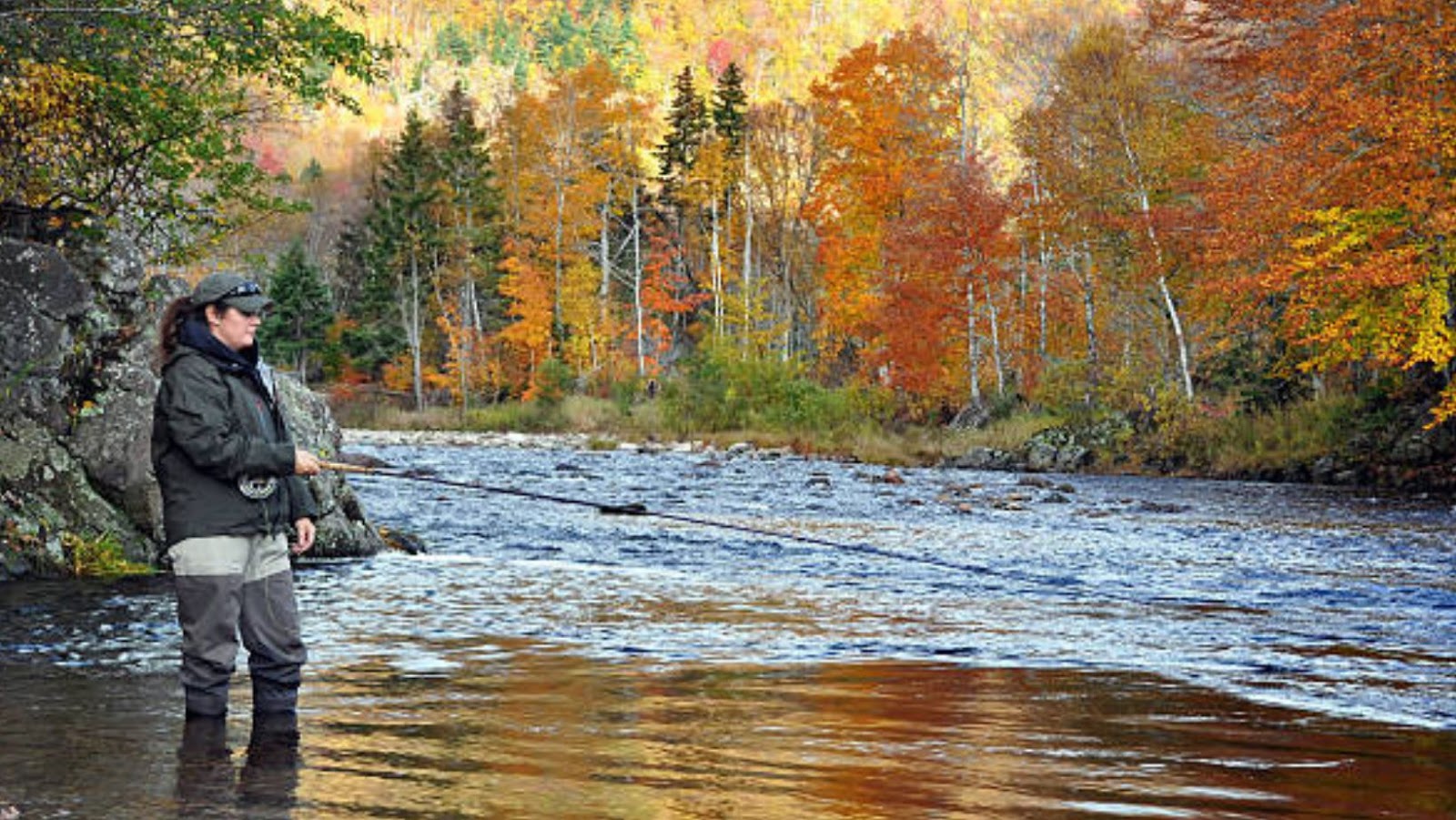
Fly Fishing Locations
To find the perfect location for your fly fishing journey, you need to consider multiple factors. In order to optimize your fly fishing experience and catch the trophy fish you’ve been dreaming of, explore our sub-sections in Fly Fishing Locations, which includes Rivers, Lakes, and Saltwater.
Rivers
The waterways that provide ideal fly fishing opportunities are abundant, and they offer a diverse range of terrain and habitats for fishing enthusiasts. These aquatic trails are an angler’s calm oasis, host to rainbow and brown trout, and many other species.
In the table below, we have listed some of the best rivers in terms of fly fishing. It outlines their locations, sizes, dominant fish species, as well as notes on fishing activities – like whether they are catch-and-release only.
| River | Location | Length (miles) | Dominant Fish Species | Notes |
| Madison | Montana | 120 | Brown & Rainbow Trout | Catch-and-release recommended |
| Colorado | Colorado/Wyoming | 1,450+ | Rainbow Trout & Brown Trout | Best during summer |
| Deschutes River | Oregon | 252.2 | Steelhead & Chinook Salmon | Migratory routes |
| Kenai River | Alaska | 155 | Rainbow Trout & Salmon | Best during June-July |
It should be noted that each river has its unique features that make it an excellent place to fly fish. The Madison has dramatic scenery, while the Deschutes is known for its migratory routes through stunning forests. The Kenai boasts breathtaking silvery salmon runs offshore with significant flows.
Montana’s Madison River has been attracting anglers since the early 20th century when world-record catches were documented here. This led to increased awareness of fly-fishing’s potential as a booming industry for nature lovers.
Who needs a therapist when you have a quiet lake and a fishing rod?
Lakes
This section explores the natural environments of numerous water bodies, providing an all-round experience worth trying. Here are 5 points to consider when choosing a lake for fly fishing:
- Type of fish species available in the lakes.
- The water’s depth and structure, which can affect the fish habitat and their feeding behavior.
- Water temperature plays an essential role in aquatic species’ survival and activity levels
- The size of the lake determines how much time one needs to seek adequate grounds where fish concentration is high enough.
- Accessibility to specific locations around the lake. Some areas are challenging to cast due to physical barriers such as vegetation or rocky surfaces
It is important to note that different bodies of water offer unique experiences. In some cases, shallow but large lakes contain monster-sized trout that frequent the area’s edges, while others may have chilled water ideal for salmon habitat. Hence fly fishing enthusiasts must consider every aspect before selecting a specific spot.
When choosing a location around a lake ensure that you select an area with active fish habitats. This could be near rocks or wind-blown shores where insects like damsels tend to concentrate, hence luring more predators.
Based on personal preferences, anglers should experiment with several fly patterns until they find productive ones at particular locations around a lake that works better than others. You might catch a fish in saltwater, but you’ll definitely catch some sunburn.
Saltwater
Expanding the heading that pertains to fly fishing in saltwater environments, coastal areas are excellent spots where many different fish species can be found. From the Pacific Northwest to the Florida Keys, there is an abundance of saltwater locations across the U.S. that offer great fly fishing opportunities.
For a better understanding, we have created a table highlighting some of the best saltwater fly fishing locations:
| Location | Target Fish Species | Best Time to Visit |
| Florida Keys | Tarpon, Bonefish, Permit, Snook | March – June |
| Cape Cod Bay | Striped Bass, Bluefish | May – October |
| Long Island Sound | Striped Bass, Bluefish | May – September |
| Gulf Shores | Redfish, Speckled Trout | September – November |
Apart from these popular spots, there are other lesser-known places where saltwater fly fishing can be an exciting experience. Fishing around wrecks and reefs or near estuaries and lagoons proves to be quite successful.
It is not just about finding the right location but also understanding the behavior and feeding patterns of different fish species. For instance, tarpon can typically be found hunting for prey at night as they prefer to hunt under the cover of darkness.
According to Fly Fishing Magazine, “Saltwater fly fishing is one of the fastest-growing sports within our industry”.
Overall, it’s clear that there are plenty of thrilling opportunities for those who love fly fishing in saltwater environments. Remember, the only thing worse than not catching any fish is breaking all the rules of fly fishing ethics and safety while doing it.
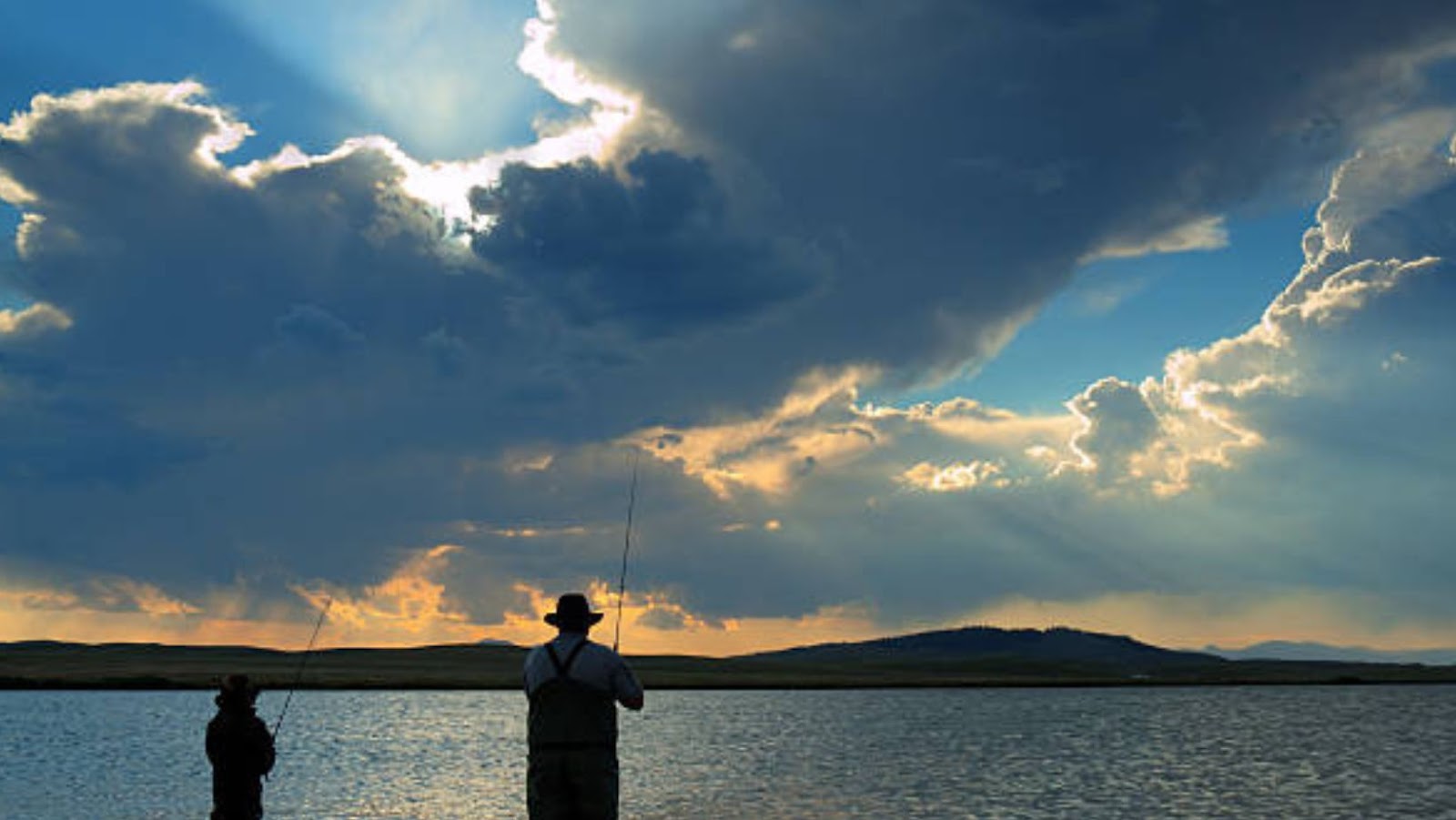
Fly Fishing Ethics and Safety
To master fly fishing successfully with ethical and safe practices, explore the section on ‘Fly Fishing Ethics and Safety’ and learn how to practice catch and release, abide by fishing regulations, and take safety precautions. These sub-sections will ensure you are responsible and respectful towards the environment, the fish, and other fly fishers.
Catch and Release
As anglers, it’s important to understand the importance of returning fish to their natural habitat in optimum health. This practice is known by a semantic NLP variation called ‘Sustainable Fish Management’. Here are five crucial steps to follow for sustainable fish management:
- Ensure that the tackle is right for the species you are catching.
- Wet your hands before handling the fish
- Use barbless hooks as they don’t hurt fish when removed.
- Keep the fish in water as much as possible and release them gently.
- Don’t play the fish for too long, tire them out gently, and revive them.
While practicing sustainable fish management, remember never to touch their gills or squeeze too tightly around their bodies. It also ensures less harm with minimal impact on marine ecosystems.
Interestingly, every year, several fly fishermen face deadly accidents such as falling into a fast-flowing river due to fishing in treacherous footings or not carrying necessary safety gear like life jackets. Hence it’s critical that ‘Safety Precautions’ should be considered along with sustainable fish management while fly fishing.
Avid fly angler Lauren was excited to celebrate her birthday at her favorite fishing location- Willow Creek. With so many beautiful views of mountains surrounding the creek, she couldn’t resist standing on top of a slippery rock within seconds of reaching there.
Despite her partner warning her about it being dangerous, she stood there and lost her balance shortly after hooking a giant cutthroat trout which pulled her towards deep water where she was swept away in undercurrents Fortunately, Lauren had read about safety tips beforehand and wore a life jacket that eventually saved her life from drowning but costing her favorite rod in this process.
Remember – sustainable fish management and safety go hand-in-hand when fly fishing! The only thing more complicated than fishing regulations is trying to understand the mind of a fish.
Fishing Regulations
Angling regulations are essential to preserve fish populations and ensure a sustainable fishing environment. These regulations differ from state to state, and it is the angler’s responsibility to educate themselves.
| Regulation | Description |
| Size Limits | Minimum & maximum size of fish that can be kept |
| Creel Limits | The maximum number of fish an angler can keep in a day or week |
| Seasons | Certain periods when fishing is closed for specific species |
It is crucial to understand local regulations as ignorance of the law is not an acceptable excuse. Violations can result in fines, license suspension, or even jail time.
Pro Tip: Always check with local authorities before heading out on your next angling adventure, as regulations may change seasonally, depending on conditions.
Remember, a fishing trip isn’t complete without a few safety precautions – unless you’re a fan of swimming with the fishes.
Safety Precautions
To ensure your safety while enjoying the sport of fly fishing, it is essential to take necessary pre-emptive measures. Here are some key tips to keep in mind:
- Wear a life jacket or personal flotation device (PFD) at all times.
- Wade carefully and avoid treacherous areas with fast currents.
- Carefully handle sharp fly hooks and equipment.
- Be aware of your surroundings, including watching out for wildlife and other anglers.
- Bring a fully stocked first aid kit with you on every trip in case of an emergency.
It’s important to remember that each fishing excursion presents its own unique challenges. Therefore, always assess the environment before planning any Fly Fishing trip.
Lastly, consider bringing a buddy along for extra safety. This way, if one person gets into trouble, they can get help from the other as quickly as possible. By being prepared and cautious while on the water, you can ensure that your fly fishing experiences are safe as well as enjoyable.
Reel in some helpful tips and tricks with these fly fishing resources, because knowing how to catch a fish is just as important as knowing how to release it.
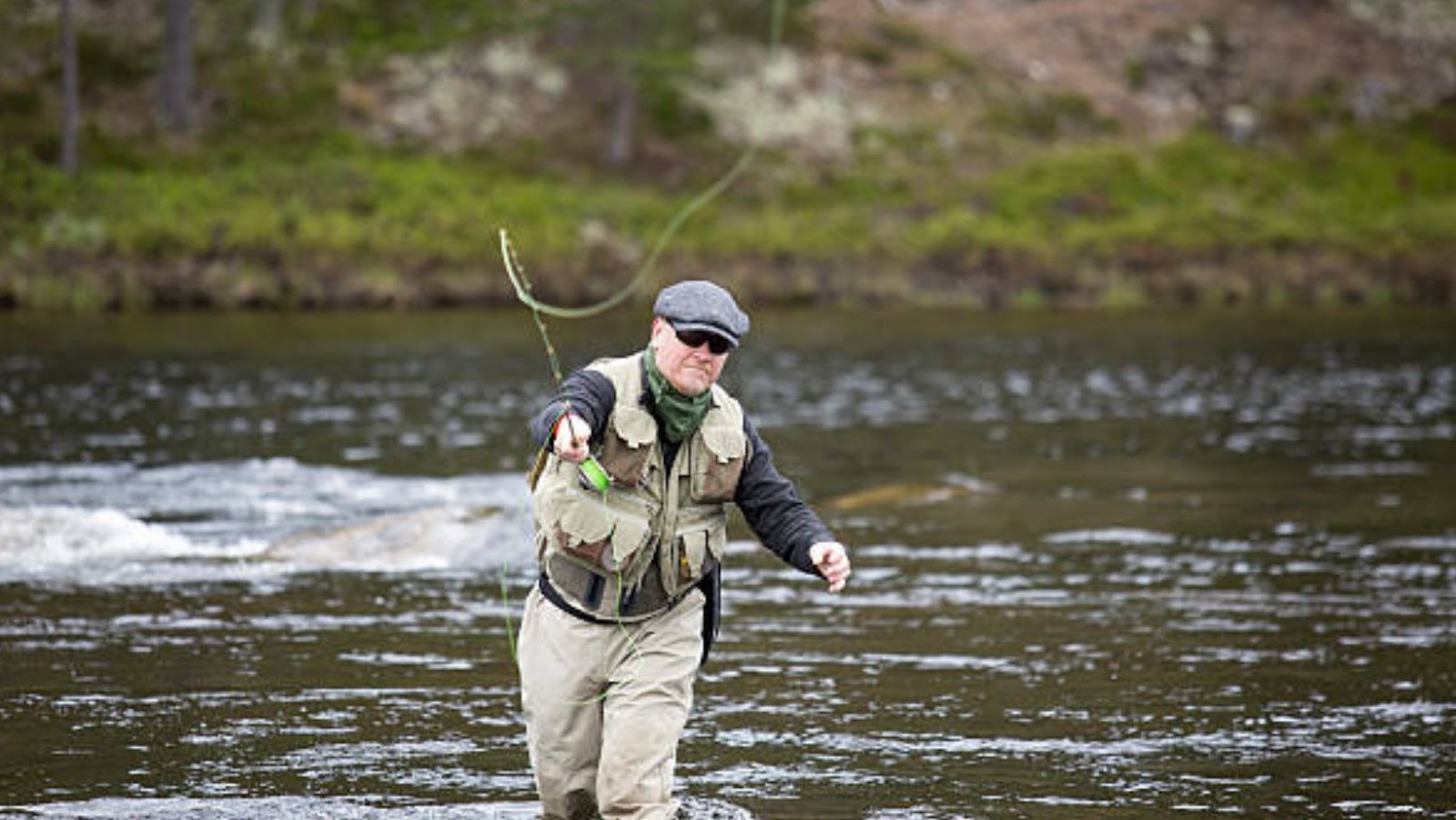
Fly Fishing Resources
To learn more about fly fishing, you need to have easy access to all resources available. In order to provide you with solutions, this section ‘Fly Fishing Resources’ with sub-sections ‘Books and Magazines,Online Resources,Local Fly Fishing Clubs and Organizations’ will aid you on your journey to gain more understanding on how to start fly fishing.
Books and Magazines
For those interested in enhancing their fly fishing skills, learning from books and magazines can be a great resource. Literature on the topic provide helpful tips, techniques, and insights. There are many books and magazines that offer such resources.
- Books: Several informative books on fly fishing allow anglers to learn about a variety of different topics related to the sport. Some popular titles include “The Orvis Guide to Fly Fishing,” “Trout Tips,” and “Fly Fishing for Beginners.”
- Magazines: Magazines dedicated solely to fly fishing regularly publish articles covering new products, techniques, and destinations. Some noteworthy publications include “Fly Fisherman Magazine,” “American Angler Magazine,” and “Trout Unlimited Magazine.”
- Online Resources: In addition to printed media, there are also several online resources that offer comprehensive information about fly fishing. These include websites such as Orvis.com, TroutContext.com, and GlobalFlyFisher.com.
In addition to traditional literature and digital resources, seeking advice from seasoned anglers can provide invaluable knowledge and insight.
One fascinating fact is how long fly fishing has been around for – the first recorded evidence of fly fishing dates all the way back to ancient Rome! This shows how the sport has been celebrated across cultures throughout history.
Hooked on fly fishing? These online resources will have you reeling in information faster than you can say ‘trout’.
Online Resources
The piscatorial pastime of fly fishing can be enhanced by utilizing an abundance of digital information. Explore a wealth of online tools, including fly identification guides and tutorials, gear recommendations, river maps, and instructional videos. With these resources at your fingertips, you can improve your technique and connect with fellow anglers.
These online resources also offer in-depth knowledge regarding the aquatic insects important to successful fly fishing as well as up-to-date reports on weather conditions, fish activity and stream flow. For those seeking community engagement opportunities; forums, blogs and chat rooms allow for dialogue on topics such as conservation efforts within the sport.
To really unlock the full potential of these digital assets it’s imperative to get involved – subscribe to e-newsletters from trusted voices in the fly-fishing community or follow prominent figures on social media platforms like Instagram or Twitter. Start harnessing these valuable resources today to elevate your fly-fishing experience!
Don’t let a lack of knowledge hinder your angling ability – take advantage of these dynamic online resources! Be proactive in learning about new techniques while sharing insights with passionate anglers from across the globe. Together we can preserve our natural resources while enjoying all that this captivating pursuit has to offer.
Joining a local fly fishing club is like being part of a secret society, except the secret is just how much we love standing waist-deep in freezing water all day.
Local Fly Fishing Clubs and Organizations
Fly fishing is a sport that spans worldwide, however, every region has unique fly fishing clubs and associations. These groups provide educational resources, fundraising opportunities, and connect enthusiastic anglers with the art of fly fishing. Here are a few benefits of these Local Fly Fishing Clubs and Associations:
- Every group has unique knowledge of local water systems
- Provides ongoing education – casting techniques to aquatic biology
- Provides fundraising opportunities for environmental conservation projects
- Offers an environment that fosters a supportive community for new or experienced anglers inspired by the passion.
Getting involved in these organizations will provide you with a variety of knowledge about fly fishing through events such as expert guest speakers, organized gatherings into local rivers, and other fly-fishing-related activities. With this newfound expertise; you can be confident in understanding how to progress as an angler by always engaging with fellow members.
If you’re looking to advance your fly-fishing skills, then participating in club gatherings will provide many benefits. Perhaps you’ll discover near-by locations filled with fish or perfect your precision casting technique. Don’t forget to seize each opportunity that arises during workshops conducted within the club—utilize their shared knowledge to excel in developing necessary skills!

